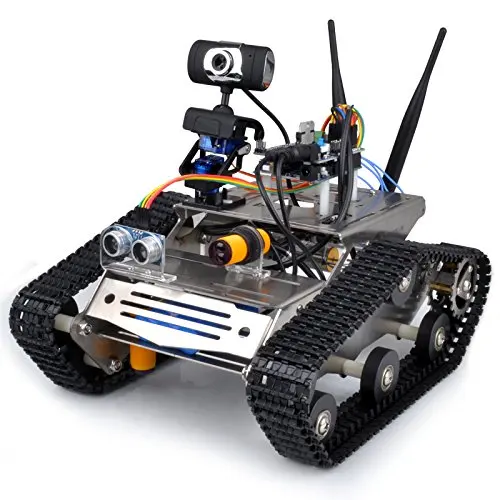What Exactly Is Arduino?
Arduino can be an open-source, programmable microcontroller and software in line with the ATMega chip. Although Arduino is designed being a prototyping platform, quite a few in a variety of electronics projects whether temporary or embedded. The Arduino board might be programmed while using Arduino software. The syntax just for this is comparable to C/C++ and Java. It really is made to be simple and simple to utilize, and can be operated by anyone, from beginners to experts alike.
As Arduino is surely an free platform, you will get their hands on the origin code and schematics correctly. This means you can delve as far involved with it as you want, even creating your own personal Arduino boards. There's also a large community behind it, and you will find many tutorials and projects from all over the entire world online.

What can I actually do having an Arduino? Pretty much anything! It has been used in a wide variety of ways because the choices are virtually unlimited. Past projects include robots, art installations, in-car computers, MIDI controllers, cocktail makers, human-computer interfaces, Facebook 'like' counters, advertising displays, clocks, music instrument, custom mouse and keyboard, home automation... Other great tales and also on!
The primary features of an Arduino board are it's power to read data from sensors, to send and receive digital signals and can connect via serial in your computer. You'll be able to control several things, from LEDs and LCDs, to motors and relays. You may also read values from sensors for example potentiometers, light dependent resistors (LDRs) and piezos.
Digital pins with an Arduino enable you to read or write 5v values. Use a pin to turn by using an LED (having a resistor). You can send a sign to a relay to work higher voltage appliances like televisions and house lights. You can send messages to motors to make off and on. You should check to ascertain if a button has become pressed. You can also send and receive serial data, parallel data and digital pulse width modulation. Basically whatever could be controlled with a amount of current can be utilized.
The analog pins let you read an incoming voltage between 0v and 5v. This can be the method that you read from sensors. There is a plethora of sensors available, from simple hands-on pressure sensors and rotary potentiometers, to environment sensors such as pressure, gas, temperature and in many cases alcohol. In case you have, by way of example, a slider set to precisely 1 / 2 of its range, it will output a voltage of two.5v. The Arduino will then see this and employ the value to control something else.
To learn more about roboter please visit internet page: click here.
As Arduino is surely an free platform, you will get their hands on the origin code and schematics correctly. This means you can delve as far involved with it as you want, even creating your own personal Arduino boards. There's also a large community behind it, and you will find many tutorials and projects from all over the entire world online.

What can I actually do having an Arduino? Pretty much anything! It has been used in a wide variety of ways because the choices are virtually unlimited. Past projects include robots, art installations, in-car computers, MIDI controllers, cocktail makers, human-computer interfaces, Facebook 'like' counters, advertising displays, clocks, music instrument, custom mouse and keyboard, home automation... Other great tales and also on!
The primary features of an Arduino board are it's power to read data from sensors, to send and receive digital signals and can connect via serial in your computer. You'll be able to control several things, from LEDs and LCDs, to motors and relays. You may also read values from sensors for example potentiometers, light dependent resistors (LDRs) and piezos.
Digital pins with an Arduino enable you to read or write 5v values. Use a pin to turn by using an LED (having a resistor). You can send a sign to a relay to work higher voltage appliances like televisions and house lights. You can send messages to motors to make off and on. You should check to ascertain if a button has become pressed. You can also send and receive serial data, parallel data and digital pulse width modulation. Basically whatever could be controlled with a amount of current can be utilized.
The analog pins let you read an incoming voltage between 0v and 5v. This can be the method that you read from sensors. There is a plethora of sensors available, from simple hands-on pressure sensors and rotary potentiometers, to environment sensors such as pressure, gas, temperature and in many cases alcohol. In case you have, by way of example, a slider set to precisely 1 / 2 of its range, it will output a voltage of two.5v. The Arduino will then see this and employ the value to control something else.
To learn more about roboter please visit internet page: click here.